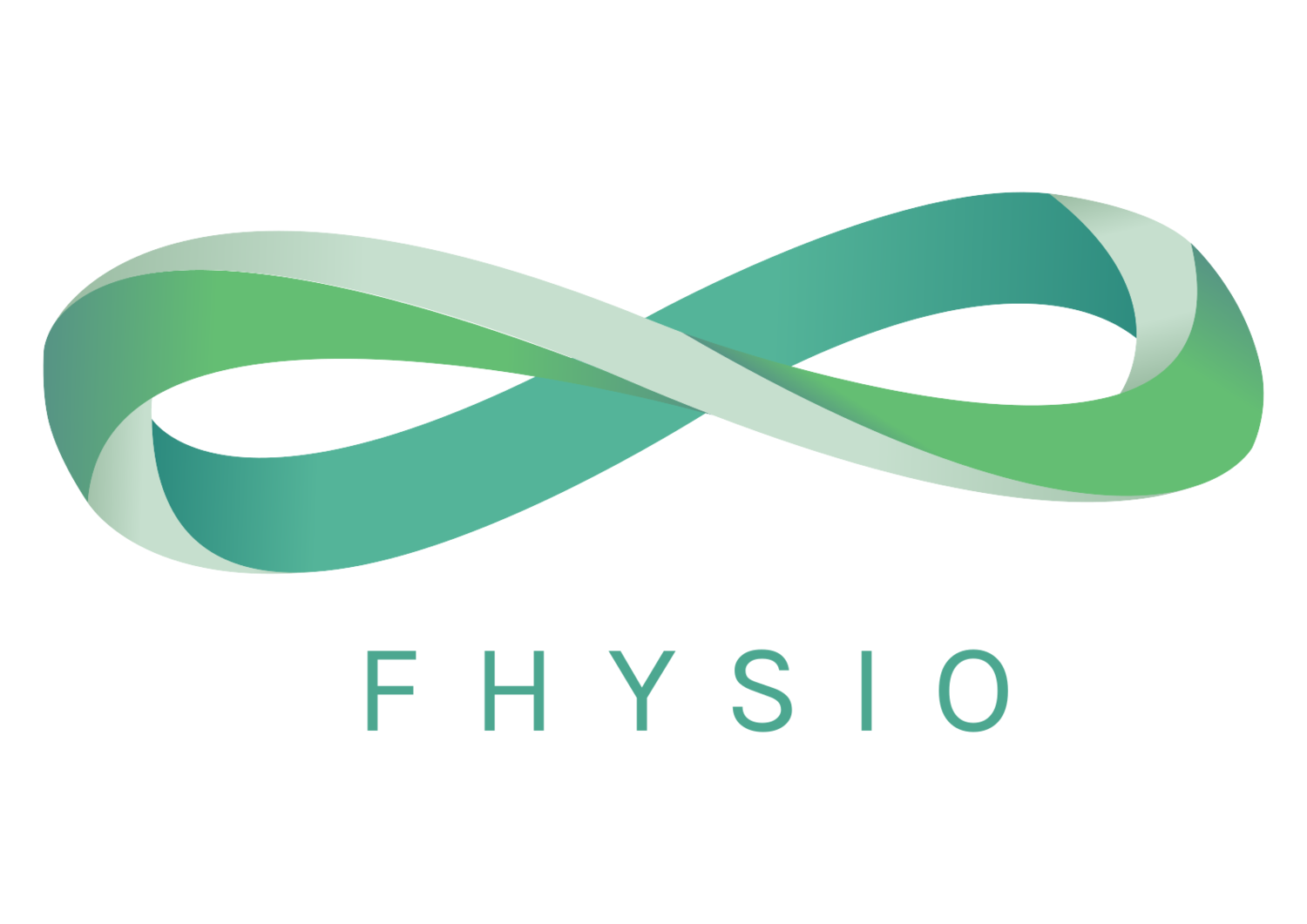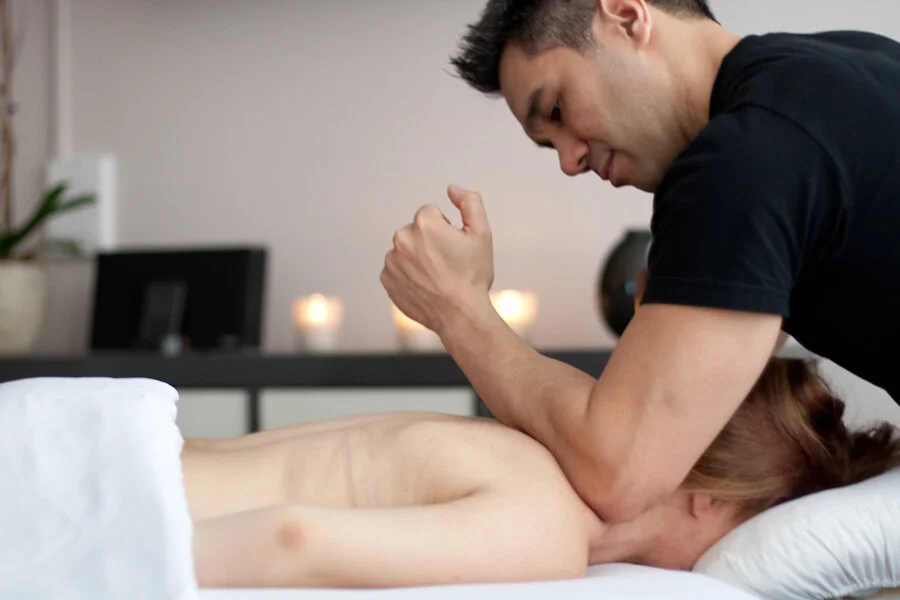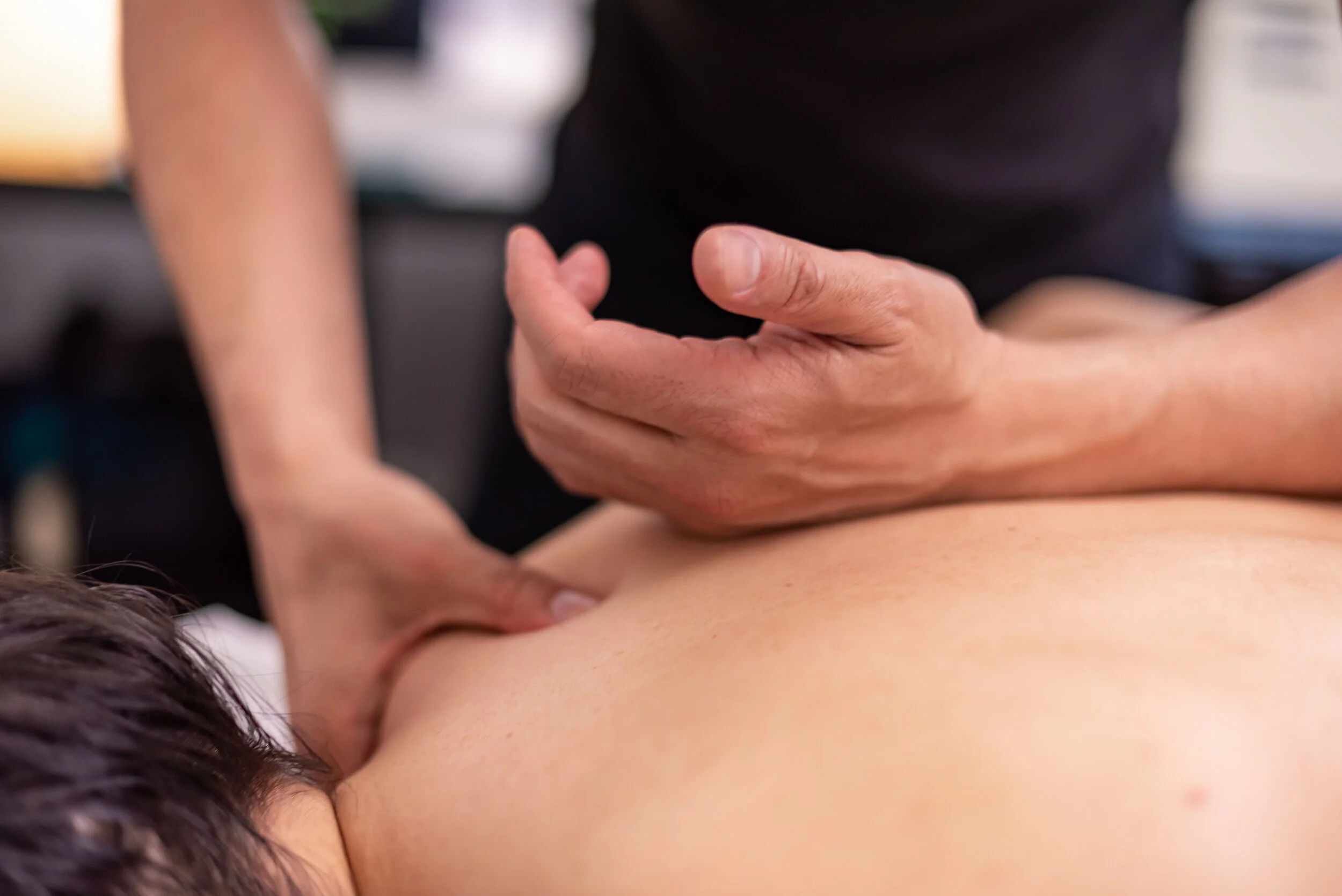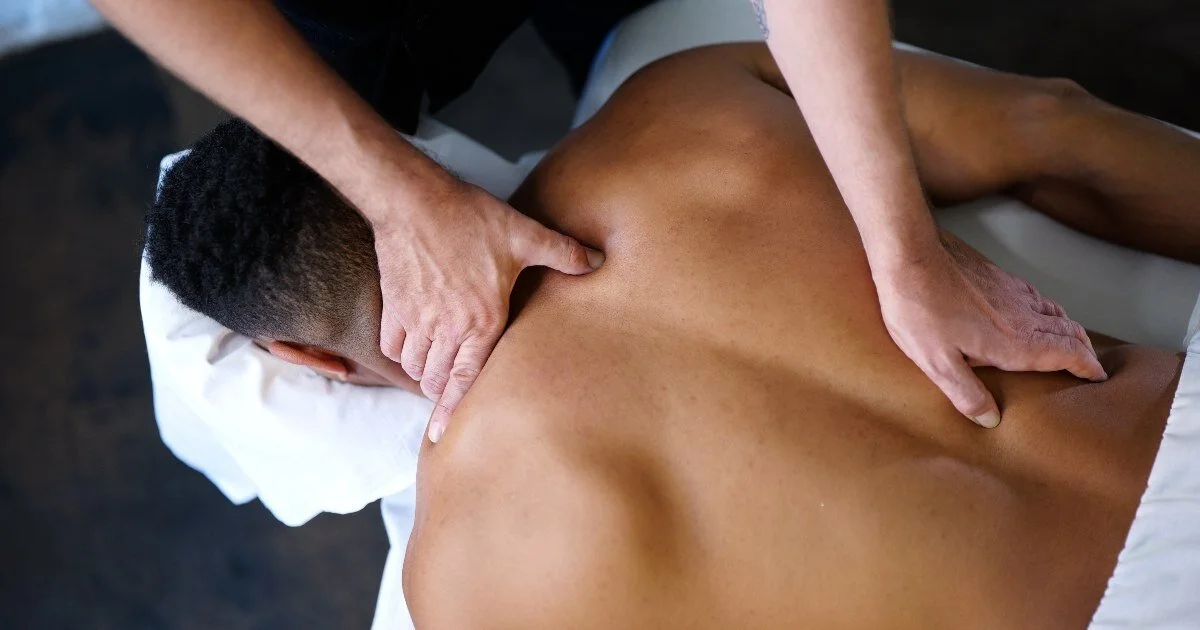Deep-Tissue Massage
Are you interested in getting a Deep-Tissue Massage in Singapore?
We'll start by explaining what a Deep-Tissue massage entails, its benefits, whether it is right for you, and how to prepare for one.
And finally, we’ll tell you how often you need a deep-tissue massage to melt away your pains and how much it’ll cost to get started!
Let’s get into it…
What is a Deep-Tissue Massage?
Chronic stress, bad posture, injury, sleep deprivation, unhealthy diets, dehydration, sedentary lifestyle, and many more can cause tension and adhesions to accumulate deep in your soft tissues. The result? Indescribable pain and limited mobility.
The solution? Deep-Tissue Massage.
Deep-tissue massage applies firm and continuous pressure using slow, deep strokes to penetrate the deeper layers of muscle fibers and connective tissues (fascia) surrounding the bones and joints. It is aimed at:
Delivering deep relaxation
Boosting blood circulation to the muscles
Draining built-up metabolic and lymphatic waste from the muscles
Enhancing mobility and flexibility, and ultimately
Relieving chronic pain and discomfort
Deep-tissue massage therapists often use their fingertips, hands, knuckles, elbows, forearms, and massage tools to break up adhesions and relieve built-up tension in contracted areas of the body, including neck, back, shoulder, leg, and plantar fascia.
What is the Difference Between Deep-Tissue Massage and other massages?
Unlike other massages, deep-tissue massage doesn’t make use of aromatherapy or hot stones. And rather than focusing on full-body relaxation, it addresses specific pain points.
It uses slower, deeper, and firmer strokes compared to the Swedish massage. While the Swedish massage uses long, gentle strokes and light pressure to relieve tension in the superficial layer, the deep-tissue massage uses slow strokes and great intensity of pressure to break knots in the deep layers of soft tissues.
It takes a massage therapist who can channel energy from their core to perform a deep tissue massage.
The Swedish massage is intended for relaxation purposes, whereas the deep tissue massage is used for therapeutic purposes — to relieve pain and aid muscle recovery.
If you are looking for stress relief and improved blood circulation, a Swedish massage or Tuina is probably what you need. But if you require relief from chronic muscle tension and pains from sports-related injuries, the deep tissue or sports massage is the perfect fit.
Deep-tissue massage shares some similar techniques with a sports massage, with both of them using a thorough understanding of musculoskeletal, myofascial, and lymphatic systems. But their focus differs — While the sports massage targets injuries and vulnerable pain points, the deep-tissue massage targets deep-seated chronic pain and muscle tension.
The sports massage is geared towards athletes who suffer injuries or have tendencies to, but it has also proven effective for persons who engage in high-intensity workouts. The deep-tissue massage is focused on chronic muscle pain caused by unhealthy or stressful living.
Should I get a Deep-Tissue Massage?
Sure, deep-tissue massage helps ease physical pain and promotes overall health and wellness by realigning adhesions in the deep layers of muscles and connective tissue, but it isn’t a one-size-fits-all solution. So how can you determine if the deep-tissue massage is the perfect fit for you?
If you answer yes to any of the following questions, you will benefit greatly from one:
Do you suffer from repetitive strain injuries such as tennis elbow, carpal tunnel syndrome, and tendonitis?
Do you engage in high-intensity exercises at least 5 times a week?
Do you have medical conditions like arthritis and rheumatoid arthritis, high blood pressure, fibromyalgia, sciatica, plantar fasciitis, and frozen shoulder?
Do you feel chronic muscle pain in your lower and upper back pain, neck, leg, shoulders, knees, and even glutes?
Are you an athlete who is recovering from sports injuries?
Do you have piriformis syndrome?
Do you have postural problems?
If you are an athlete or regular gym-goer who is looking to speed up the healing of strains and injuries and improve your performance, a sports massage may be more beneficial than a deep tissue massage.
Benefits of a Deep-Tissue Massage
There are many physical and psychological benefits of deep tissue massage. They include:
Enhanced flexibility and joint mobility
Chronic stress and muscle pain relief
Improved blood circulation
Drainage of lymphatic and metabolic waste
Improved posture
Faster sports-related muscle recovery
Relaxation and normalized blood pressure
Better sleep quality
How Do I Prepare For a Deep-Tissue Massage?
Finding a reliable massage clinic or deep massage therapist who knows their stuff is important, but you too have a role to play to ensure that the deep tissue massage is hassle-free and effective. Here are 6 things to do before your appointment:
Get a good night’s sleep: A deep-tissue massage will be effective only if you are relaxed. Avoid any late-night activity and sleep for at least 7 hours the night before your massage session.
Take a warm shower: A warm shower will help soothe any body tension and muscle fatigue. While you are in the shower, don’t try to get over it quickly. Enjoy the feel of the water on your skin.
Eat a light meal: It will be very uncomfortable to get a deep tissue massage while your stomach is trying to digest a heavy meal. Eat a light meal and pack another light meal or snack to eat after your massage.
Drink a lot of water: Drinking a lot of water is key to the success of deep massage therapy. How? Water will hydrate your muscles and make them easy for your deep massage therapist to manipulate.
Also, water will help flush out toxins from the tissues that are released during the massage.
Wear comfortable clothing: Wear loose, comfortable clothing that will be easy to take off and put back on.
Do breath exercises: Breathing exercises can help ease any anxiety you feel before your massage.
Feel free to tell your massage therapist what your problem areas and expectations are so that they can deliver a personalized experience.
It is also important for you to get comfortable enough to communicate any relevant information to your massage therapist. Let them know if you have suffered a serious injury in the past, have had surgery recently, or have medical conditions like uncontrolled hypertension, tumors, or blood clots. At FHYSIO, we are trained to safely work with patients who just had surgery.
Does a Deep-Tissue Massage Hurt?
While your therapist is applying intense and targeted pressure to break up deep muscle knots and tension, you might feel a certain level of pain. This pain is similar to what you may feel during an intense workout. However, if the pain becomes too intense or unbearable, let your therapist know, and they will employ a gentler technique.
Even if you feel discomfort or short pangs of pain during the massage, take deep breaths and try your best to remain calm. Tensing up will cause your muscles to stiffen and might encourage your therapist to apply even more pressure.
Also, your muscles may feel sore or inflamed after a deep tissue massage. This is only an after-effect of the pressure applied to them and is a sign that you are healing. The soreness will subside within a day or two.
To reduce the pain and soreness, you can try any of these methods:
Drink a lot of liquids save for alcohol, caffeinated and sugary drinks
Do light stretches
Use cold packs
Take a hot shower, visit the sauna, or prepare a relaxing bath soak at home.
Try guided meditation
Apply an ointment or use essential oils for sore muscles
If you get deep tissue massages done often, your body will register a muscle memory, and so you won’t feel as sore as your first time.
How Often Should I Get a Deep-Tissue Massage?
Depending on your lifestyle and reasons for a deep tissue massage, your recommended frequency could vary from few times a week to once a week.
Even though you will begin to see results after your first session, you can get lasting and better results from a few more massage sessions. Have your massage therapist recommend a duration and frequency that’ll rid you of pains quickly.
How Much Does it Cost?
A good deep-tissue massage session usually runs for at least 60 mins and can cost from $70 to $160, depending on the therapist’s experience and location.
At FHYSIO, our 60 mins personalized massage therapy (a tailored massage treatment that combines the best of deep-tissue and sports massages) starts at $112 for first-time customers.
Final Word
Deep-tissue massage is an important tool in holistic care. It starts with understanding your pain points then delivers lasting solutions that’ll improve your overall health and wellness. At FHYSIO, we tailor our massage treatments to cater to the unique needs of our clients.







